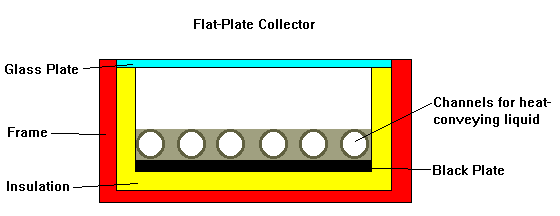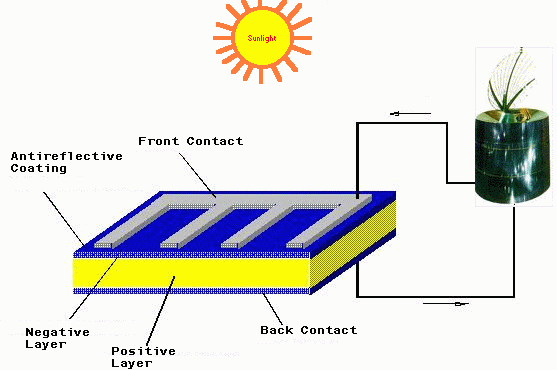
Solar energy is becoming more and more popular as time goes by. It is cheap, clean, and it will never run out. In fact, many houses now heat their homes using solar collectors. Water is piped up to the roof, where it sits inside flat-plate solar collectors until it is hot. It then returns to the house and is used either in the plumbing or to heat the house. Below is a picture of a flat-plate solar heater.

Although flat-plate collectors are useful on earth, they are pretty useless on a satellite. A satellite needs a device that can create electric power, and the flat-plate collector merely heats water. Fortunately for the space industry, a device exists that can convert sunlight directly into electric power.
The device that directly converts light into electric power is called the photovoltaic cell. A photovoltaic cell is made up of two different layers of silicon pressed together. When light strikes the different layers, one layer builds up a negative charge and the other layer generates a positive charge. However, if the charges have nowhere to go, they will just sit there and not do anything useful. Therefore, a wire grid is attached to the front of the cell to act as a negative contact (like the flat end of a battery) and a metal plate is added to the back of the cell to act as a positive contact (like the knobby end of a battery).When wires are attached to these two contacts, an electric current flows.
A single photovoltaic cell doesn't produce much power, so a satellite's solar panels are made up of hundreds of photovoltaic cells connected together. These panels can generate enough electricity to power a satellite's computers, radios, cameras, and other equipment, as well as recharging the satellite's back-up batteries.
